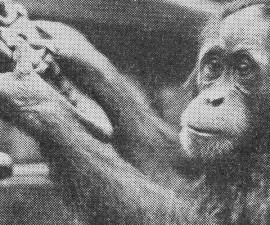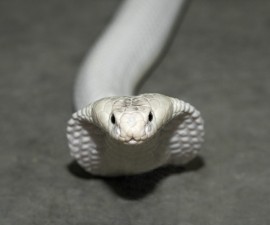BY Karyl Carmignani
Photography by Ken Bohn
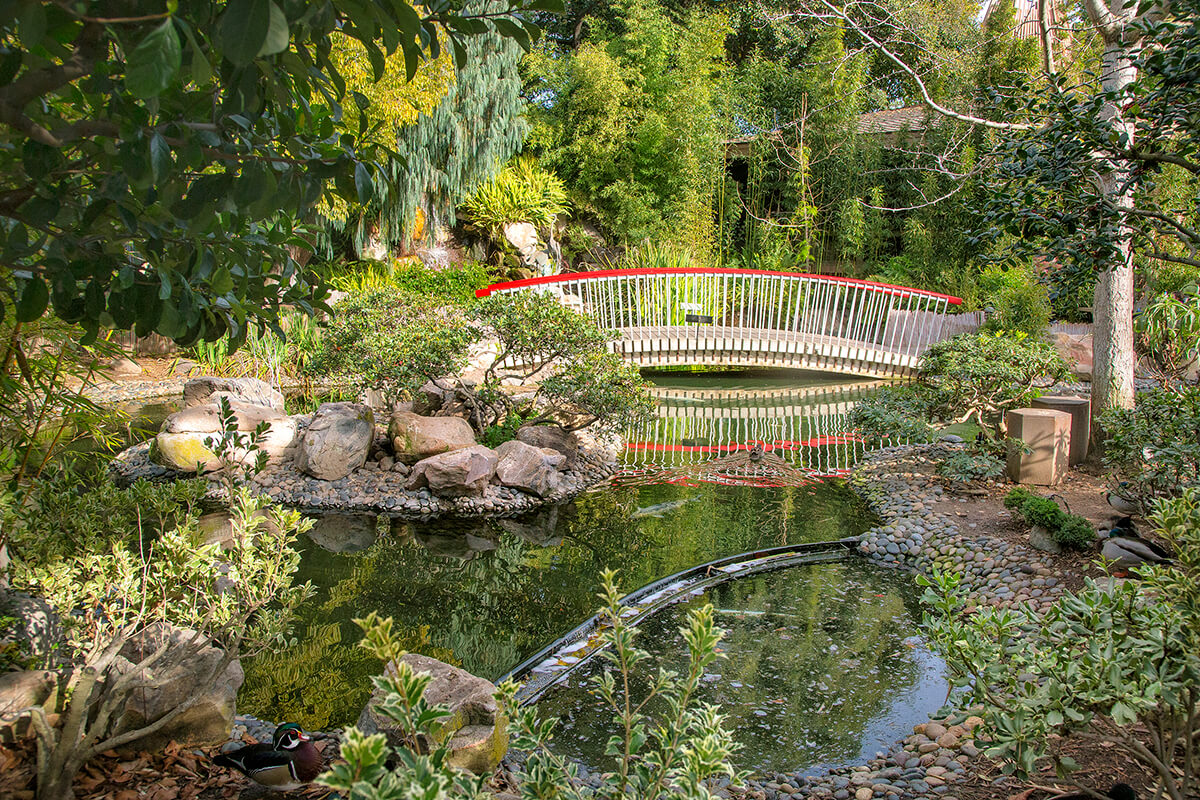
Ducking into the Terrace Lagoon is a tranquil detour off Main Street at the San Diego Zoo. It is a bamboo-backed respite with a soothing waterfall tumbling into a curving, feng shui pond lined with foliage and grasses. A graceful walkway arc provides a bird’s eye view of the pond, complete with a Japanese-style tōrō stone lantern. It is the ideal spot to slow your breathing, calm your nerves, and relax your mind. It is also a soothing experience for the shimmering, colorful resident koi fish. San Diego Zoo has been home to koi fish for decades. Recently, one koi needed a medical treatment for cancer and veterinarians and other staff worked together toward a positive outcome. You could say the procedure went swimmingly! Koi have a long, patterned (not checkered) past with humans, and many people have a deep affection for this elegant, scaled creature.
Carp a Diem
Koi and goldfish are both types of carp, members of the Cyprinidae family. Koi history goes back millions of years; carp fossils have been discovered in South China thought to be 20 million years old. The fish were featured in Chinese artwork and carvings and some Chinese rulers kept carp in pools for their viewing enjoyment. Natural mutations of color on their mostly brown skin occurred like patchwork on the fish early on, but it was the Japanese who developed ways to manipulate the blotches of color and create “living jewels” or Nishikigoi. Initially, Japanese rice farmers in Niigata kept the carp as a food source to feed their families through the winter. Soon, color mutations on the skin of the koi burst with color, so they built separate ponds for the fancy-colored fish and kept them as pets. By the 1820s, they were bred for their varied aesthetic appeal. As their artful appearance grew, so did interest in keeping koi. In 1914, Emperor Hirohito was given koi to keep in the moat of the palace, which was a huge boon for the sparkling fish’s popularity. That same year, koi were also featured at an annual exposition in Tokyo, which further enhanced their appeal. Bred for coloration, color pattern, and scalation, ornamental koi Cyprinus carpio have become the ideal “decoration” for outdoor ponds and water gardens. These colorful fish can be worth thousands of dollars.
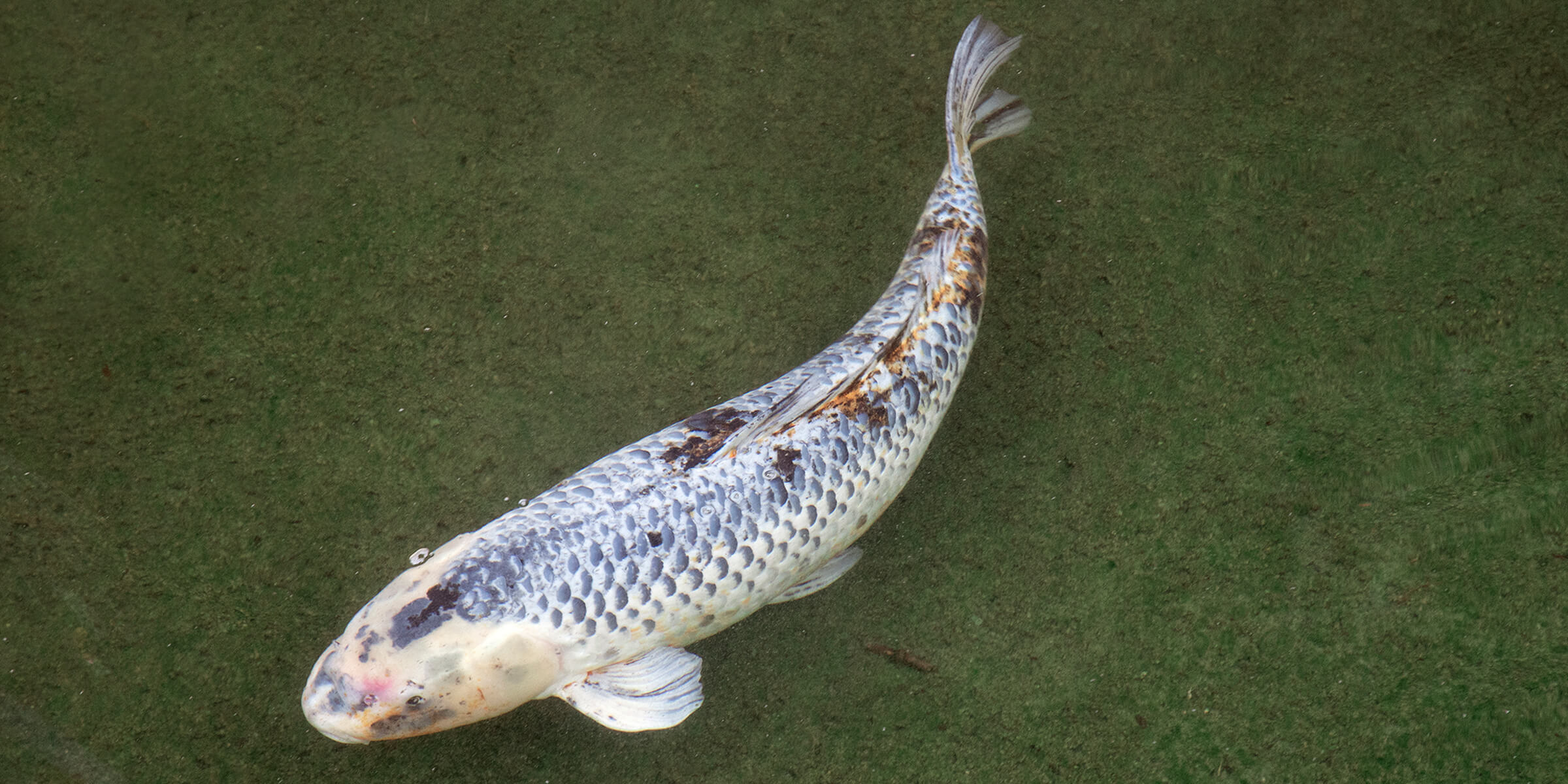
Keep Koi and Carry On
With its easygoing nature and energetic life force, people have long sought the characteristics associated with koi: good fortune, success, prosperity, longevity, courage, ambition, happiness, and perseverance. Much of the koi’s symbolism arises from the Chinese legend of the Dragon Gate, where the determined koi swam upstream, conquering waterfalls and other obstacles to reach the “Dragon Gate,” where the fish are transformed into a dragon, a positive force in Chinese culture.
Koi are also tied to the Yin Yang symbol, with the black and white shapes representing a male and female koi, each completing the other; creating peace and harmony. It is also called upon as a good luck sign for a happy marriage.
Thousands of people keep koi fish in outdoor ponds or large aquariums. It is a movement that draws the positive energy and beauty of these creatures into the home. Koi require meticulously clean and well-filtered water, a healthy diet, access to shade (they are susceptible to sunburn!) and plenty of room to grow, swim, and koi-ly “chat” with other fish. They can reach 2 to 3 feet in length and weigh up to 35 pounds. Healthy koi can live for 50 to 75 years, while some experts insist some have lived for nearly 200 years. And that’s no fish story!
Koi at the Zoo
Nearly a dozen colorful koi glide around the Zoo’s Terrace Lagoon in a 18,500-gallon pond. You may also spot tiny mosquito fish and a bluegill or two. The pond used to be a bird pool, and in the 1990s a filtration system was added to support the koi. The elaborate system operates 24/7, and the water is disinfected with ozone gas to remove contaminants (chlorine is not compatible with fish). Without a good filtration system, the koi would poison themselves, as they excrete ammonia. The pond is vacuumed once a week. Visitors are asked to refrain from tossing coins in the pond, as the fish may accidentally ingest a coin and die.
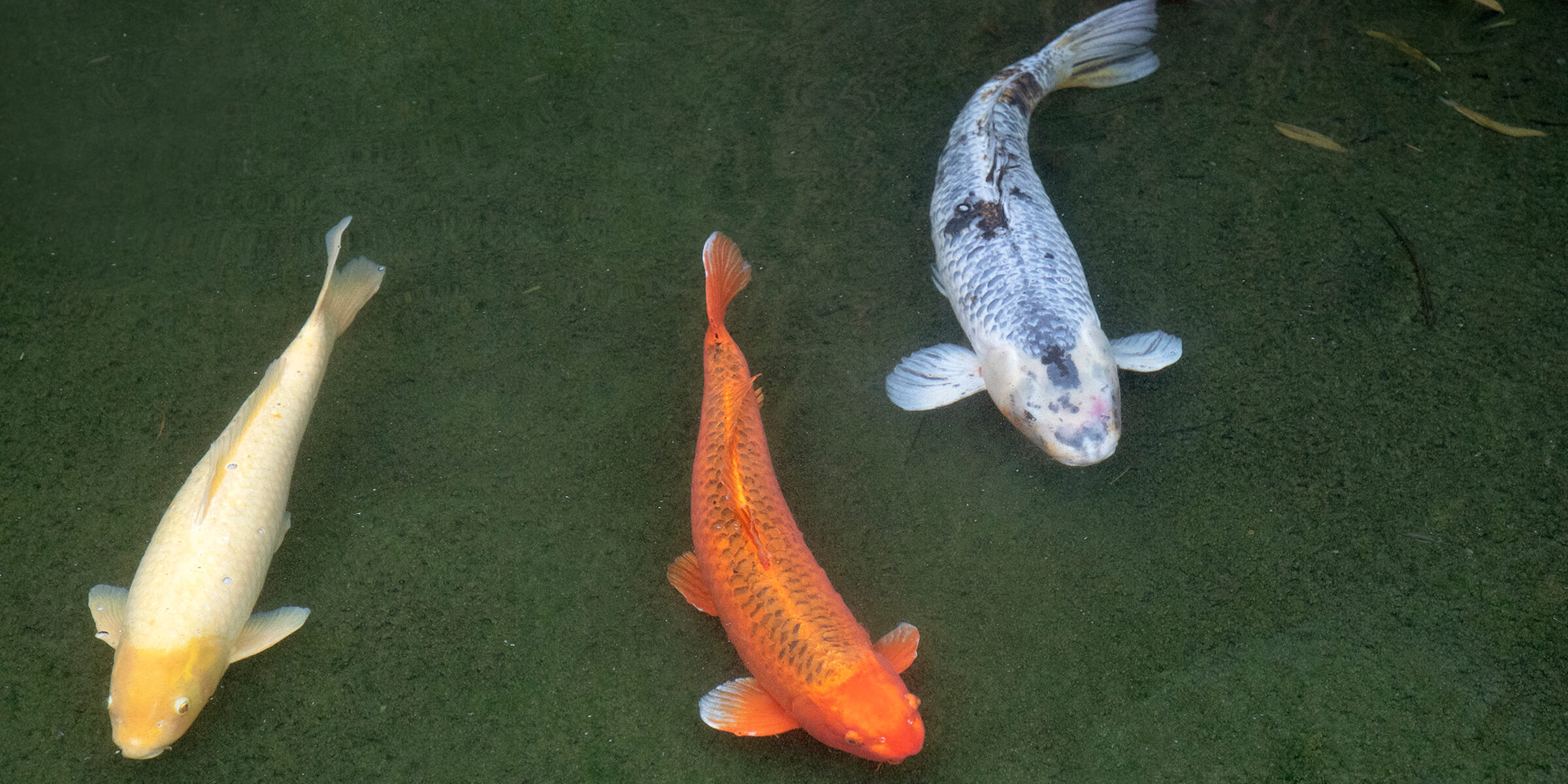
Cool Koi Colors
There are about 100 types of koi fish today, each bred and crossed for a desired color and pattern. Observing the koi at Terrace Lagoon, you may find different types including:
Kohaku: white body with red spots (symbolizes success in your career)
Kumonryu: either solid black or a white body with black spots (symbolizes life changes and transformations)
Ogon: solid, silver color (symbolizes success in business, wealth)
Kuchibeni: white and red patterned fish, often referred to as the “lipstick” koi, as the red color around its mouth resembles puckered lips (symbolizes love and long-lasting relationships)
Yamabuki: gold-colored body (symbolizes riches and wealth)



